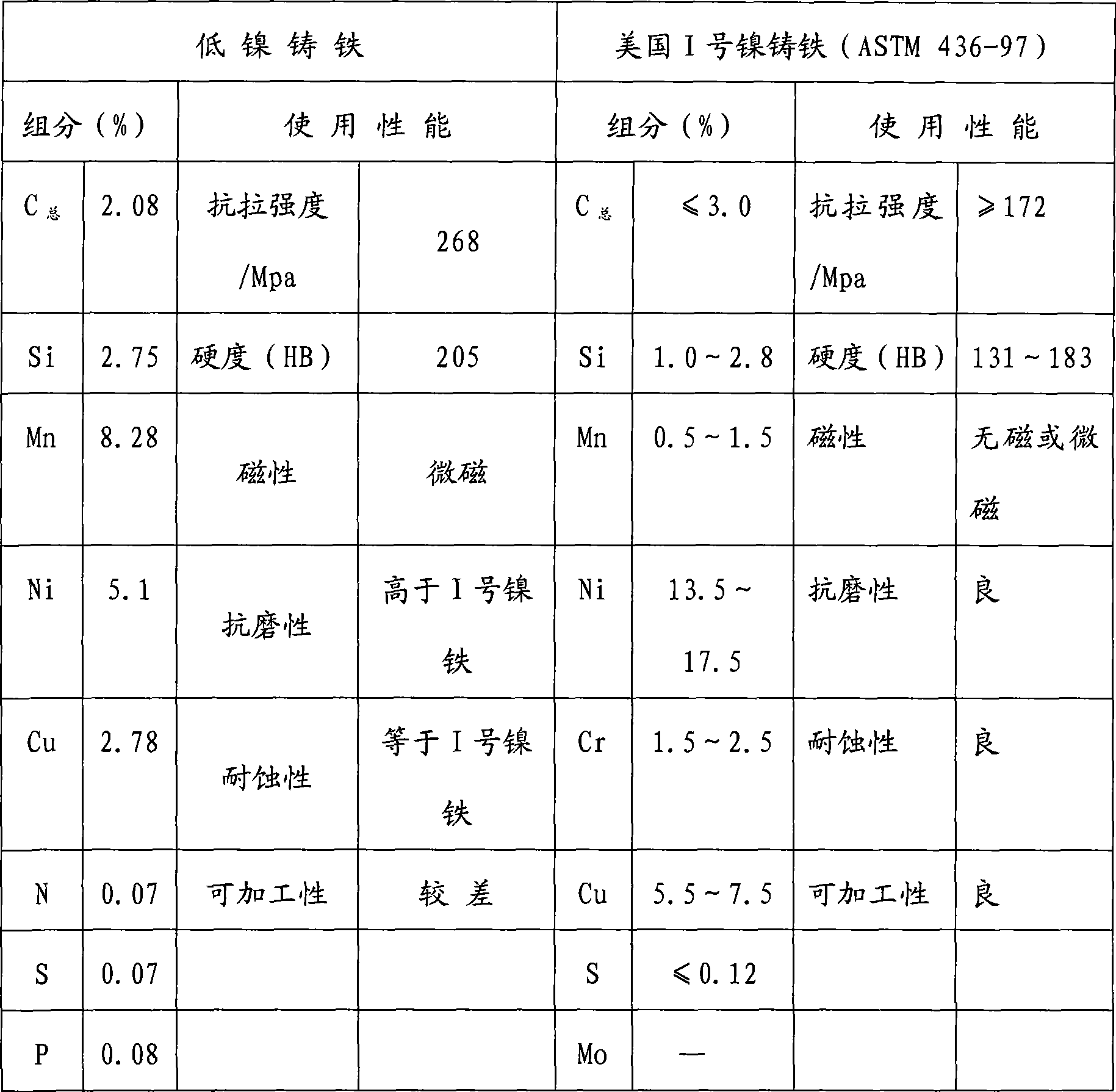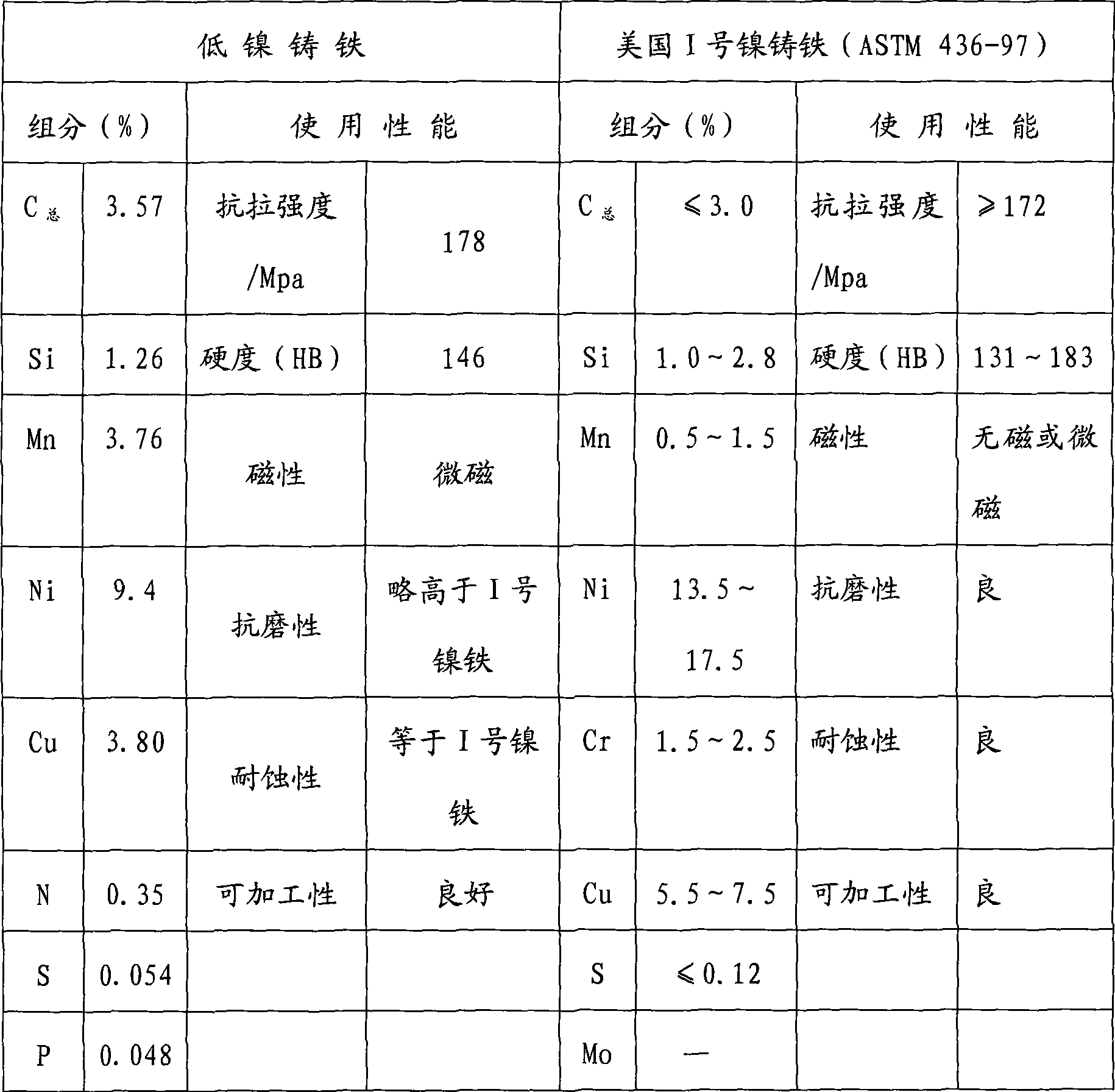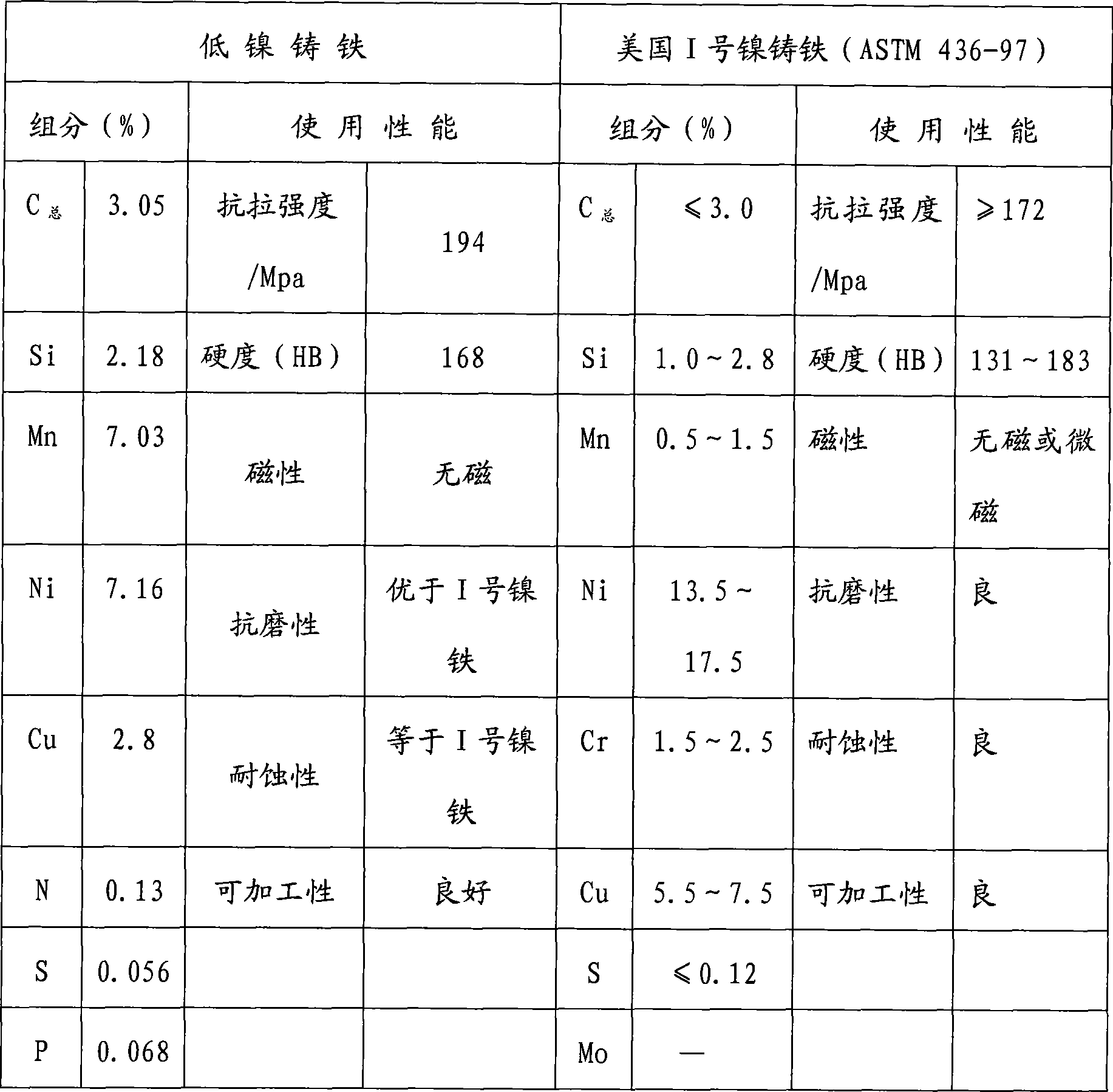Low nickel cast iron and preparation method thereof and use thereof in impeller
A technology of nickel cast iron and its manufacturing method, which is applied in the direction of casting equipment, the control of pouring molten metal from the ladle, mechanical equipment, etc., which can solve the problems of nickel resource shortage and achieve high impact toughness
- Summary
- Abstract
- Description
- Claims
- Application Information
AI Technical Summary
Problems solved by technology
Method used
Image
Examples
Embodiment 1
[0022] Weigh 150kg of raw iron, 81kg of scrap steel, 30kg of blast furnace ferromanganese, 6kg of ferromanganese nitride, 16kg of electrolytic nickel, 8kg of electrolytic copper, and 9kg of 75 ferrosilicon. Mix and prepare the charge, put the charge into an intermediate frequency electric furnace and energize and melt it. After the charge is completely melted, cover it with perlite on the (liquid iron) to raise the temperature. After adding ferrosilicon and melting ferrosilicon, the iron can be tapped. The temperature at which molten iron is poured into the sand mold or shell mold (the part in red is not clearly described) is controlled at 1400°C. The properties of the low-nickel cast iron obtained are compared with those of No. 1 nickel cast iron in the United States, as shown in Table 1.
[0023] Table 1
[0024]
Embodiment 2
[0026] Weigh 238kg of raw iron, 16kg of ferromanganese nitride, 30kg of electrolytic nickel, 14kg of electrolytic copper, and 2kg of 75 ferrosilicon, and mix them to make a charge. Put the charge into an intermediate frequency electric furnace and melt it with electricity. After the charge is completely melted, cover it with perlite Raise the temperature on the (liquid iron), when the temperature of the (liquid iron) rises to 1700°C, add ferrosilicon after slag removal, and iron can be tapped after the ferrosilicon is melted. The temperature at which molten iron is poured into the sand mold or shell mold (the part in red is not clearly described) is controlled at 1500°C. The obtained low-nickel cast iron is compared with the properties of No. 1 nickel cast iron in the United States, as shown in Table 2.
[0027] Table 2
[0028]
Embodiment 3
[0030] Weigh 233kg of primary iron, 15kg of blast furnace ferromanganese, 15kg of ferromanganese nitride, 22kg of electrolytic nickel, 8kg of electrolytic copper, and 7kg of 75% ferrosilicon, and mix them to make a charge. Finally, cover the molten iron with perlite to raise the temperature. When the temperature of the molten iron rises to 1750°C, add ferrosilicon after slag removal and melt the ferrosilicon to tap the iron, and pour the molten iron into the sand mold or shell mold The temperature (not clearly described in the red part) is controlled at 1550°C. The properties of the low-nickel cast iron obtained are compared with those of No. 1 nickel cast iron in the United States, as shown in Table 3. (please supplement table 3, list low-nickel cast iron of the present invention and No. 1 nickel cast iron of the United States in the values of parameters such as strength, hardness, impact toughness, corrosion resistance, metallographic structure)
[0031] table 3
[0032]...
PUM
 Login to View More
Login to View More Abstract
Description
Claims
Application Information
 Login to View More
Login to View More - R&D
- Intellectual Property
- Life Sciences
- Materials
- Tech Scout
- Unparalleled Data Quality
- Higher Quality Content
- 60% Fewer Hallucinations
Browse by: Latest US Patents, China's latest patents, Technical Efficacy Thesaurus, Application Domain, Technology Topic, Popular Technical Reports.
© 2025 PatSnap. All rights reserved.Legal|Privacy policy|Modern Slavery Act Transparency Statement|Sitemap|About US| Contact US: help@patsnap.com



